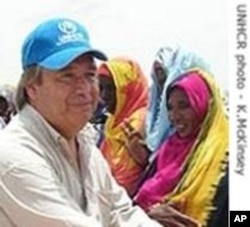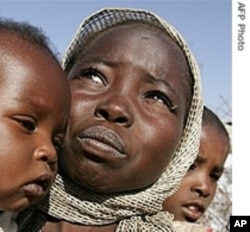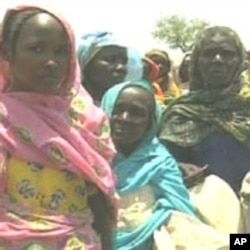In the 21st century, images of refugees living in forlorn camps in Vietnam, Southwest Asia, and the Middle East are rapidly giving way to a new urban prototype that mirrors a general population shift from countryside to the city.
The U.N. High Commissioner for Refugees (UNHCR), which begins hosting mayors from 20 world cities Wednesday in Geneva, estimates that as many as 50 percent of the earth’s 10.5 million refugees now live in cities and towns. To address their needs and plan for the future, a two-day dialogue will engage heads of government, municipalities, humanitarian and civic groups, academics, and refugees themselves to set up new protections and help dispersed populations secure jobs, public health, food, housing, and education.
High Commissioner chief of media and content Adrian Edwards says that the focus of Wednesday’s and Thursday's meeting includes the challenges facing many African urban refugees.
“Africa is certainly bearing the brunt of the problem. You have many of the refugee problems of the world that we’re looking after are on the African continent. Most of the settings where this is occurring are in developing countries. This isn’t a phenomenon that primarily we’re seeing in North America, Europe, or the richer world. It is located in the developing world. Africa is very much part of it,” he said.
Since 1950, the number of city dwellers has mushroomed between four and fivefold to about 3.3 billion people. For refugees in Africa and other developing countries, Edwards expects that trend to continue and raise new issues for planners and government authorities to solve.
“Increasingly, we’re seeing the world’s population living in cities. Refugees are part of that population. If you don’t as a city planner focus on the fact that you’re going to have to deal with refugees as well, you are likely to have problems down the road if this isn’t addressed. You’ll have people moving to the city for economic reasons on the one hand. You’ll have refugee populations on the other. We think refugees deserve protection. They deserve being cared for, and their needs are going to have to be addressed in planning for the future,” he noted.
The 1951 United Nations Convention Relating to the Status of Refugees defines the rights of individuals who are granted asylum. Edwards says that planning for the future will enable municipalities to ensure that transplanted populations will continue to obtain their necessities in a changed world.
“When refugees travel, their rights go with them. We want these rights to be respected. We would rather that refugees could be accepted into the communities, that they can appeal for the rights that they’re entitled to, and that might for example include access to food rations, to education, to health services, to being part of the labor market. You should not have in a city people living in dire conditions, who have to hide from the authorities. This is a reality of where the world is changing, and we think the world’s major cities need to adapt to this new reality,” he said.
While the UNHCR will continue to work with more reluctant governments to improve opportunities for new arrivals, it is calling on all governments to recognize a new reality that threatens in an urban backdrop to raise new obstacles.
Edwards warns that not only do cautious refugees feel the need to keep low profiles and stay out of public view, but many of them become subject to discrimination and in the extreme to xenophobic confrontations. He admits refugee planners lack answers for helping host governments to deal with their unique problems and divergent attitudes toward their guests. But he remains hopeful that this third dialogue will come up with some solutions that can make a difference for the refugees and the local populations that support them.









